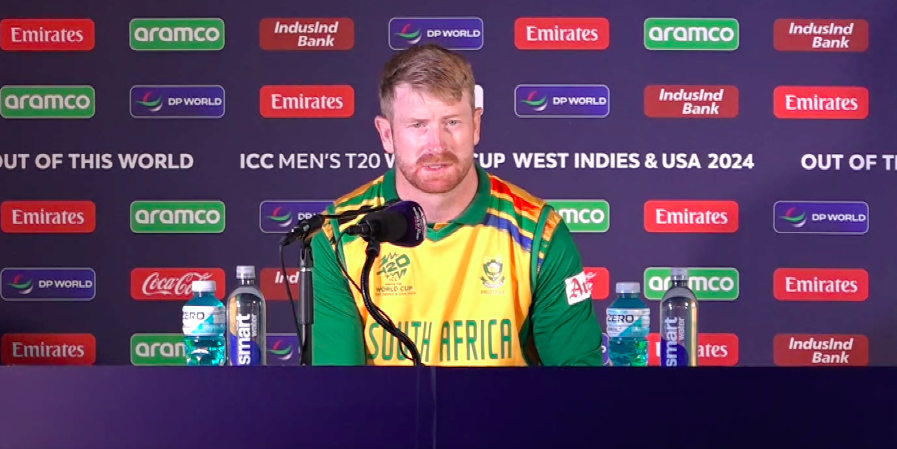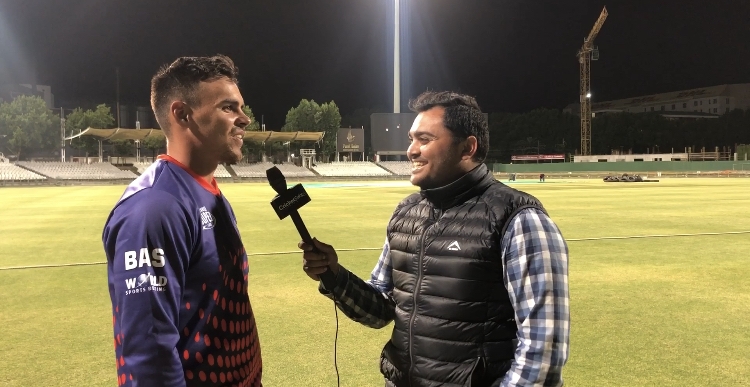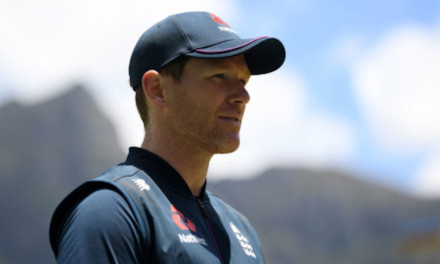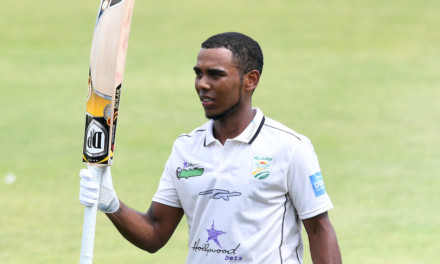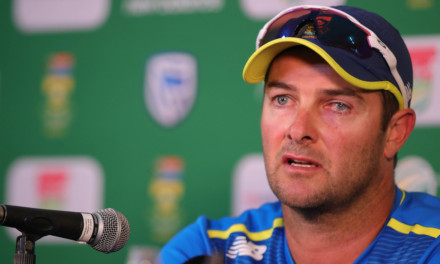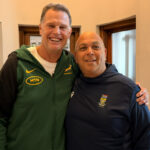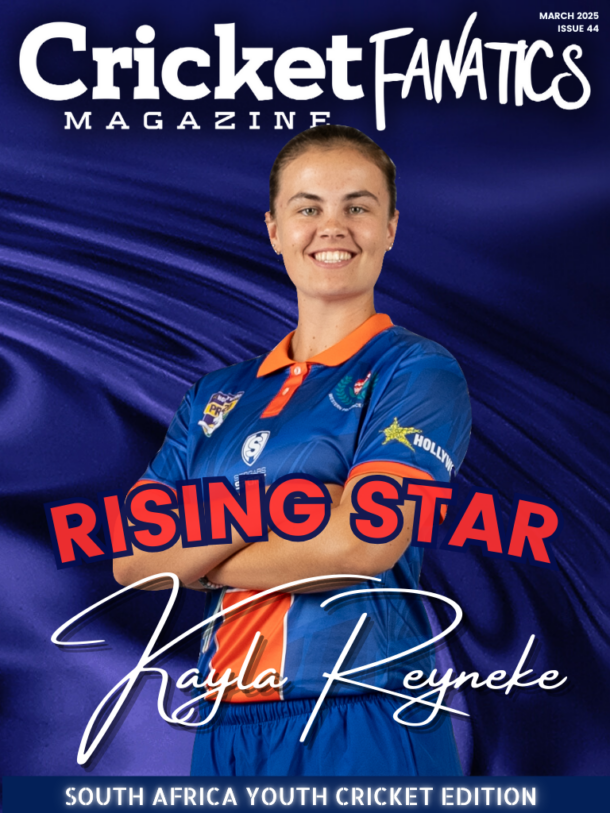Heinrich Klaasen reacts to South Africa’s close win against Bangladesh in the T20 World Cup.
[Reporter:]
I just want to talk about the recalibration of the brain that has perhaps needed to go on here, because I find myself at the halfway stage thinking that’s a pretty good score. Have you had to really make a profound re-adjustment about the way you look at the game?
[Heinrich Klaasen:]
Yes, I think David showed us in the previous game how to bat on this wicket and it’s almost a similar way that we bat in the middle or in a one-day game. So, our mindset is not even close to T20 cricket. You just want to get in and find a way to bat at a run-a-ball. And we know you’re one or two hits away just for going over the run-a-ball strike rate.
I saw India and Pakistan yesterday. Even two great teams, they struggled to get to 120. So that just means that we have to change our mindset completely. You can’t just stand there and smack it all over the park. So, we had more or less of a one-day mindset today. So, myself and David in the middle, and that seemed to be working. And then the last three overs, we looked to take the game on a little bit more T20 style.
[Reporter:]
We talk a lot about the differences between the formats but I mean coming from India last month to here this is probably the biggest difference, isn’t it?
[Heinrich Klaasen:]
Yeah, it’s a big change you see scores there – well it was a month and a half ago we were part of a score that’s 270 – 260 so it’s well off, but it’s part of the game. You still have to win the game so the smarter teams and the way the guys have to bat, we have to adapt. It doesn’t look like the Caribbean wickets are too much better. So, we have to play smart cricket and use our cricket brain a little bit more.
[Reporter:]
And just finally, we wouldn’t advocate conditions like this obviously, but are you quite enjoying it in a strange kind of way?
[Heinrich Klaasen:]
It’s still good cricket for the cricket lovers that’s out there. Obviously, if you have to showcase it to the world and sell it, I don’t think it’s a great selling product, but for cricket, it’s tight competition. It brings the other teams and the higher teams very close to each other, so the game is open to any team that does the basics of cricket very well.
For us it’s very nerve-wracking, because every game becomes a really big game. There’s no easy games for us especially in our group. So, it’s still good entertaining cricket. Everyone is on the edge of their seat and any team can beat any team on the down this on this field.
[Reporter:]
You’ve gone three games here now. You’ve won all three of them. Are you eager to go to the Caribbean now or do you want to stay here and play the rest of the tournament?
[Heinrich Klaasen:]
I think all the batters are keen to get out of this place, to be fair. The bowlers would love to stay here but – no we’ve done our job that was the goal to win three out of three here. Obviously, it was a little bit harder than what we thought, but that’s also good preparation for going into the next phase of this competition. We’ve dealt with pressure very well in this three games and it’s always good experience and you can put it in a notebook and always go back when the tough times are there again.
[Reporter:]
A lot of teams struggle to make even a hundred runs here. What’s the power score you think that will win games for you in the Caribbean?
[Heinrich Klaasen:]
It’s different. Out of us all, the thing on stats that are out of 18 games, it’s only been one score above 200. So normally in the Caribbean, it’s about 160 as par. If you get to 160 -170, you’re in a good shot and you have to bowl well. So, I reckon that’s normally the good scores there, or power scores. Depending where you play, the wickets are very different around the Caribbean.
So, I think it’s a flick of the toss of the coin to see where you plan and what wicket you could get now.
[Reporter:]
Heinrich, you talk about the changing the mindset from T20 to ODI. Are there technical aspects that you change as well in trying to play on that pitch?
[Heinrich Klaasen:]
I did and it failed. So, we went back to just normal cricket and the technique, but some elements still stays the same. You still want to hit the ball hard and out of the inner ring because the ball doesn’t really ping off the bat or out of the outfield. So, you still have to hit the ball nice and hard so that element stays a little bit there but your technique becomes a little bit more tighter and you can’t just be using your hands and just swing across the line. So yeah, a little bit more technically correct, if I can explain it like that, than just being free and able to give yourself room and do other things.
[Reporter:]
And we talk a lot, it’s almost a cliche to talk about assessing conditions and adapting and everything else, but was this one of the more difficult, kind of with the pitch and the outfield kind of combined, was this one of the more difficult assessments that you guys have had to make, do you think?
[Heinrich Klaasen:]
We had some experience in Australia in the Optus Stadium, of the similar outfield that just doesn’t really release or the ball release of the bat from the inner ring. So, we had that in mind that it’s not going to be easy to hit your boundaries. So, we went back to experience like that, but the wicket also made it really difficult, especially against a slower ballers. The moment there was a little bit more pace, you can still eat the ball out. So, we had some sort of an idea what we wanted to do, but we knew if we can get to 120, It’s a good score.
[Reporter:]
You’ve had a good amount of time here now and played a fair amount of cricket here. I was just wondering as a player how you reflect on this whole project of bringing cricket to a new market, a new city, and a temporary stadium. Have you enjoyed the experience? Do you think it’s worked out well?
[Heinrich Klaasen:]
Yes and no. I played in Dallas and in North Carolina where I think there’s a little bit more cricket there. The wickets are better so it’s easier to sell cricket in that aspect. It’s fantastic what they’ve done with the stadium here and I think as the wicket matures, but obviously I think they’re taking it out in two-three days’ time so that doesn’t help. The more the wicket matures, the better these conditions will get and I think it will be a better showcase for the people. This wicket is I think four months old, so there’s a lot of maturity that needs to go into the wicket that will produce bigger scores. So, I think they’ve done an incredible job and there was a lot of fans out there. It was very, very loud and the previous games as well, the stadium gets very loud. So, I think in that aspect, it was a good success. But yeah, I would have liked to see 150, 160 scores.
[Reporter:]
Is there any way you think cricket should be going to next? Maybe Argentina, Brazil, Russia?
[Heinrich Klaasen:]
I think there’s a lot of places where – I know there was a Europe League that got started and that got cancelled. We are open as cricketers for anywhere as long as it’s good conditions and we can play good cricket, we’re all open for it and I think it’s a good idea to play maybe T20 cricket around the world in different countries. So, I’m open for that idea.
[Reporter:]
What was the thought process behind batting first?
[Heinrich Klaasen:]
Third game on the wicket. These guys are incredible when the wicket becomes slow. So that was the biggest reason why we didn’t want to chase 120. Because the wicket was definitely better than other games. But given Bangladesh, when pressure is on, and they have to go into cutters, they’ve got some of the world’s best cutter bowlers and their spinners are high quality. So that was the biggest reason why we chose the bat first.
[Reporter:]
If you look at yesterday’s match and today’s match there were a lot of similarities. Pitch was playing similarly. It was a low-scoring strategic match just like yesterday. It’s still t20 right and when you listen to a lot of the pundits and the fans, there are a lot of people saying, , attack, attack earlier. The one big exception to all of the innings was Quinton’s today. If you look at the two matches together, other than Nassim Shah at the end, in the last over yesterday, he had the highest strike rate, right? He had 18 off 11 balls, he had three boundaries. So that was the most sort of attacking knocks that we saw in the past couple of days. And yes, he got out for 18. But how important was it for your opener to put an aggressive, decent score early on the board? Even though you were batting first, knowing you were looking at probably a low score, how much did that help?
[Heinrich Klaasen:]
Yeah, definitely. But I think there’s only two ways you can go about it in the power play. It’s either try to survive and build up the innings to, let’s say, the 12 over wickets in hand and see what you can do, or you’ve got to go extremely hard. And that’s what Quinto wanted to do today. That was his game plan for the previous game as well, to go extremely hard in the power play because it’s already difficult to get the ball out of the inner ring so it’s better to hit it up in the air and find some space in the outfield.
Unfortunately, he got a ball that kept low because otherwise, that ball would have also kept on travelling into the third tier today. He was hitting it nice and sweetly. So yeah, you can go hard at it or you have to keep your wickets in hand. So, there are only two ways. And he got us to a good start, but then we lost a couple of wickets, that put us right back exactly like the other games as well.

